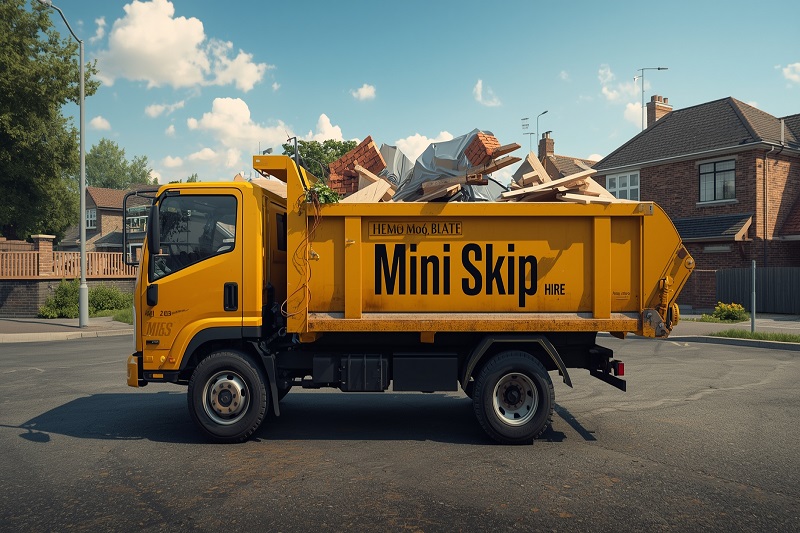In 2024, solar energy will be more accessible than ever, and DIY enthusiasts are leading the charge in sustainable living. Whether you’re a seasoned maker or just dipping your toes into the world of renewable energy, these five solar diy projects will inspire you to embrace the power of photovoltaics and reduce your carbon footprint.
Did you know that the amount of solar energy hitting the Earth’s surface in just one hour could meet global energy needs for an entire year?
It’s time to tap into this incredible power source right from your backyard!
1. Build Your Own Solar Panel Phone Charger
In this internet world, keeping our devices charged is a top priority. Then why not use solar power up your gadgets, Creating a DIY solar-powered phone charger is a fantastic way to dip your toes into the world of solar energy projects.
Materials You’ll Need
– Small solar panel (5W to 10W)
– USB charge controller
– Lithium-ion battery pack
– USB female port
– Project box or enclosure
– Wires and connectors
– Soldering iron and solder
Step-by-Step Guide
1. Connect the solar panel to the charge controller.
2. Wire the charge controller to the lithium-ion battery pack.
3. Connect the USB female port to the battery pack.
4. House all components in the project box, ensuring proper ventilation.
5. Seal the box, leaving the solar panel and USB port exposed.
Optimizing Charging Efficiency
To get the most out of your solar phone charger, consider these tips:
– Position the solar panel in direct sunlight for maximum energy capture.
– Use a panel with a higher wattage for faster charging times.
– Incorporate a battery pack to store energy for charging on cloudy days or at night.
– Keep the solar panel clean and free from debris to maintain efficiency.
With this portable solar charger, you’ll never be left with a dead phone during outdoor adventures or power outages.
2. Create a Solar-Powered Water Fountain
Transform your backyard or garden into a serene oasis with a solar-powered water fountain. This project combines aesthetics with eco-friendly technology, creating a beautiful focal point that runs entirely on solar energy.
Selecting the Right Components
– Solar panel: Choose a panel rated between 5W to 20W, depending on the size of your fountain.
– Water pump: Opt for a 12V DC pump compatible with solar power.
– Battery (optional): For consistent operation, even on cloudy days.
– Fountain kit or materials for a custom design.
Design Ideas for Your Solar Fountain
1. Tiered Ceramic Bowls: Stack differently-sized ceramic bowls for a classic look.
2. Rustic Wooden Barrel: Repurpose an old barrel for a country-chic vibe.
3. Modern Slate Columns: Create a sleek, contemporary design with slate or stone.
4. Floating Lotus: Design a pond feature with a solar-powered floating fountain.
Installation and Maintenance Tips
1. Position the solar panel in an area that receives maximum sunlight.
2. Ensure the pump is fully submerged to prevent damage.
3. Clean the solar panel and fountain regularly to maintain efficiency.
4. In winter, store the pump and panel indoors to protect from freezing temperatures.
A solar-powered fountain not only adds beauty to your outdoor space but also provides a soothing ambiance without increasing your energy bills. It’s a perfect blend of form and function in sustainable living!
3. Install Solar-Powered Outdoor Lighting
Illuminate your outdoor spaces with the power of the sun! Solar-powered outdoor lighting is an excellent way to enhance your home’s security and ambiance while remaining energy-efficient.
Choosing the Best Solar Lights
Consider these options for your outdoor solar lighting:
1. Path Lights: Guide the way along walkways and garden paths.
2. Spotlights: Highlight landscaping features or architectural elements.
3. String Lights: Create a festive atmosphere for patios and decks.
4. Security Lights: Motion-activated lights for enhanced home protection.
5. Decorative Lanterns: Add a touch of elegance to your outdoor living areas.
Creative Placement Ideas
– Line your driveway with solar path lights for improved visibility and curb appeal.
– Use solar spotlights to showcase trees, sculptures, or water features in your garden.
– Hang solar string lights around a pergola or along a fence for a magical evening ambiance.
– Install motion-activated solar security lights near entry points for added safety.
– Place decorative solar lanterns on tables or hang them from shepherd’s hooks throughout your yard.
Ensuring Long-Lasting Performance
1. Clean solar panels regularly to maintain charging efficiency.
2. Position lights to receive maximum direct sunlight during the day.
3. Replace rechargeable batteries every 1-2 years for optimal performance.
4. Protect lights from extreme weather conditions when possible.
5. Consider lights with adjustable solar panels for flexibility in placement.
By installing solar-powered outdoor lighting, you’re not only enhancing your home’s exterior but also taking a step toward energy independence and sustainability.
4. Construct a Solar Oven for Eco-Friendly Cooking
Harness the sun’s heat to cook your meals with a DIY solar oven! This project is not only fun to build but also provides a unique, energy-efficient way to prepare food outdoors.
Principles Behind Solar Oven Cooking
Solar ovens work by concentrating sunlight into a small, insulated area. The trapped heat can reach temperatures high enough to cook food, boil water, and even bake bread. It’s a perfect example of passive solar heating in action!
Materials and Construction Process
To build a basic solar oven, you’ll need:
– Cardboard box (for the oven body)
– Aluminum foil
– Black construction paper
– Clear plastic (like oven cooking bags)
– Insulation material (newspaper or straw)
– Thermometer
– Glue and tape
Steps to construct your solar oven:
1. Line the inside of the box with black construction paper to absorb heat.
2. Create a reflective lid using cardboard covered with aluminum foil.
3. Cut a window in the box lid and cover it with clear plastic to trap heat.
4. Add insulation around the sides of the box.
5. Place a thermometer inside to monitor cooking temperatures.
Recipes Tailored for Solar Oven Use
Try these solar-friendly recipes:
1. Sun-Baked Potatoes: Wrap potatoes in foil and let the sun do its magic.
2. Solar S’mores: A fun twist on a campfire classic.
3. Sun Tea: Brew refreshing iced tea using solar power.
4. Solar-Cooked Rice: Perfect fluffy rice without using a stove.
5. Sun-Dried Tomatoes: Create your preserves using solar heat.
Remember, solar cooking requires patience and clear, sunny days. It’s a fantastic way to reduce your energy consumption and enjoy the outdoors while preparing meals!
5. Design a Solar-Powered Ventilation System
Improve your home’s air quality and reduce cooling costs with a solar-powered ventilation system. This project focuses on creating a solar attic fan, which can significantly impact your home’s energy efficiency.
Benefits of Solar Attic Fans
– Reduces heat buildup in your attic, lowering overall home temperatures
– Decreases the workload on your air conditioning system
– Helps prevent moisture accumulation and mold growth
– Operates independently of your home’s electrical system
– Contributes to longer roof life by reducing heat damage
Calculating the Right Size for Your Home
To determine the appropriate size for your solar attic fan:
1. Measure your attic space in square feet.
2. For proper ventilation, you need 1 CFM (Cubic Feet per Minute) of airflow per square foot of attic space.
3. Choose a solar attic fan that meets or slightly exceeds this CFM requirement.
For example, a 1,000-square-foot attic would require a fan rated for at least 1,000 CFM.
Installation Guide and Safety Considerations
1. Choose a location on your roof that receives ample sunlight and is near the center of your attic.
2. Cut a hole in the roof according to the manufacturer’s specifications.
3. Install flashing around the hole to prevent leaks.
4. Mount the solar panel, ensuring it’s angled correctly for maximum sun exposure.
5. Connect the fan to the solar panel and secure it in place.
6. Seal around the installation to weatherproof it.
Safety tips:
– Always work with a partner when on the roof.
– Use proper safety equipment, including a harness if necessary.
– If you’re not comfortable with roofing work, consider hiring a professional for installation.
By installing a solar-powered attic fan, you’re taking a significant step towards a more energy-efficient home. This project can lead to noticeable improvements in your home’s comfort and potentially reduce your cooling costs.

Conclusion
Embarking on these DIY solar energy projects isn’t just about saving money or being eco-friendly – it’s about taking control of your energy future! By harnessing solar energy, you’re reducing your carbon footprint, gaining valuable skills, and the satisfaction of creating something amazing with your own hands.
From charging your phone with a homemade solar charger to cooking meals in a solar oven, each project offers a unique way to incorporate renewable energy into your daily life. The solar-powered water fountain and outdoor lighting can transform your outdoor spaces, while the solar attic fan can significantly improve your home’s energy efficiency.
As we move further into 2025, the importance of sustainable living continues to grow. By implementing these solar projects, you’re not just improving your home you are contributing to a larger movement towards clean, renewable energy.
Every solar panel you install and every DIY project you complete brings us one step closer to a sustainable future.
So, which project will you tackle first? Remember, the journey towards sustainable living is ongoing, and every small step counts. Whether you start with a simple solar phone charger or dive into building a solar attic fan, you’re making a positive impact on the environment and your energy independence.
Let’s make 2024 the year we truly shine with solar energy! Embrace these DIY projects, experiment with solar power, and discover the incredible potential of harnessing the sun’s energy right at home. Your sustainable, solar-powered future starts now!










